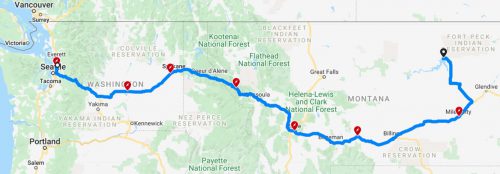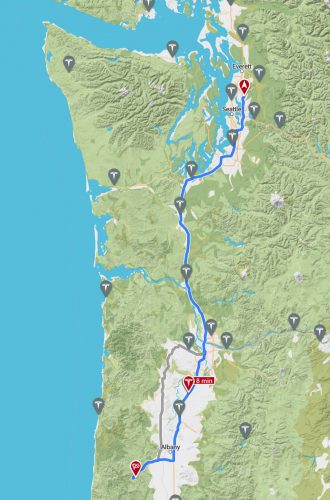Welcome to another Tesla Tuesday!
Tyla has a lot of extended family members in Montana, and a few years ago, we drove to Fort Peck for a fun weekend. When the topic of a Tesla comes up with her family, the question is often asked, “Could you drive it to Fort Peck?” The short answer is, “Yes, but I probably wouldn’t.” The fastest route breaks off of I-90 at Missoula, heads up to 2, and crosses to Fort Peck. The Tesla route planner keeps you on I-90 to I-94 and then heads up to Fort Peck after a final charge in Miles City. It’s 1133 miles instead of 985 miles and it adds charging time too. If you use a third-party route site like ABetterRoutePlanner.com, you can get a little more creative. While not as fast or convenient as a supercharger station, RV campgrounds provide 50-amp service which isn’t too shabby, especially if you’re planning to stop there for a longer meal or overnight anyway. And in a pinch, lots of hotels and shopping centers (even in Montana) have much slower charging, but I wouldn’t rely on that for a trip.

If you look at any of the charging network maps, Montana and the Dakotas are barren except for the interstates. It’s easy to drive across the states but going deep off the interstate gets tricky. This is one of the reasons why we still have a traditional internal combustion engine vehicle. I have no plans to get rid of the truck and it’s always there as an option if it makes more sense for road trips. If you have multiple cars, you don’t need your electric vehicle to be capable of every drive you might ever take.
Ignoring extreme examples like Fort Peck, most of our drives straightforward with the Tesla. The car navigation system predicts battery usage and automatically routes to chargers as needed. One of the longest trips we have planned this year is to the small town of Alsea, OR. Google Maps says it is 292 miles and 4 hours and 42 minutes. If we took the Tesla, we’d have a single 8 minute charging stop along the way.

However, that leaves us with a 10% charge when we arrive at our destination. While I assume there’s a 110v outlet that we could slow charge from, I’m more likely to plan the route to include arriving with enough battery so I don’t have to worry about charging at the destination. Adding that means that total charging time increases (round trip) to 41 minutes spread across three charging stops. I guarantee that the people in the car with me would need more bathroom stops than that anyway.
When we were debating the purchase, I spent a lot of time plugging in our common drives to the Tesla route planner. Most of them don’t require any stops at all, but for the ones that do, it’s rarely more than 20 or 30 minutes of total charging time. It will take a little more planning, especially if someone needs a bathroom break and I try to find an EV charger on the fly to take advantage of the stop, but we’ll definitely be trying it and if it proves to be too annoying, we always have the truck which is a great road trip vehicle.
